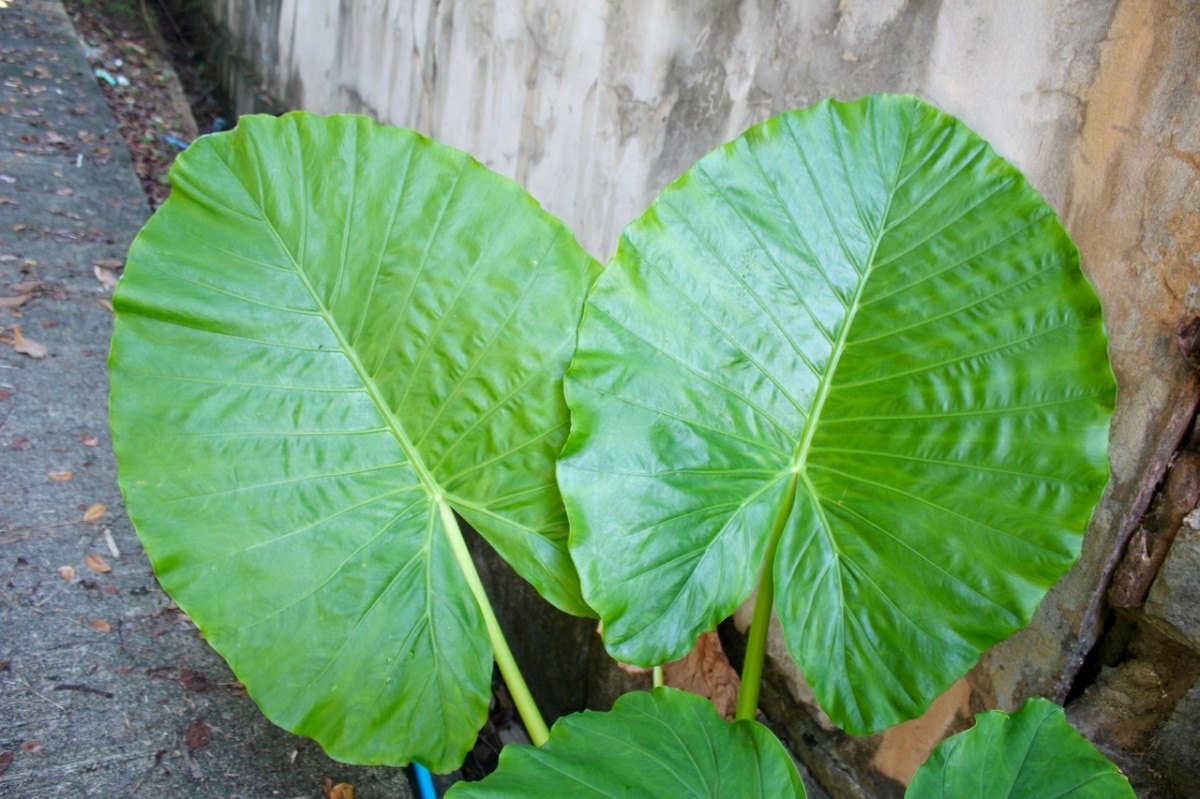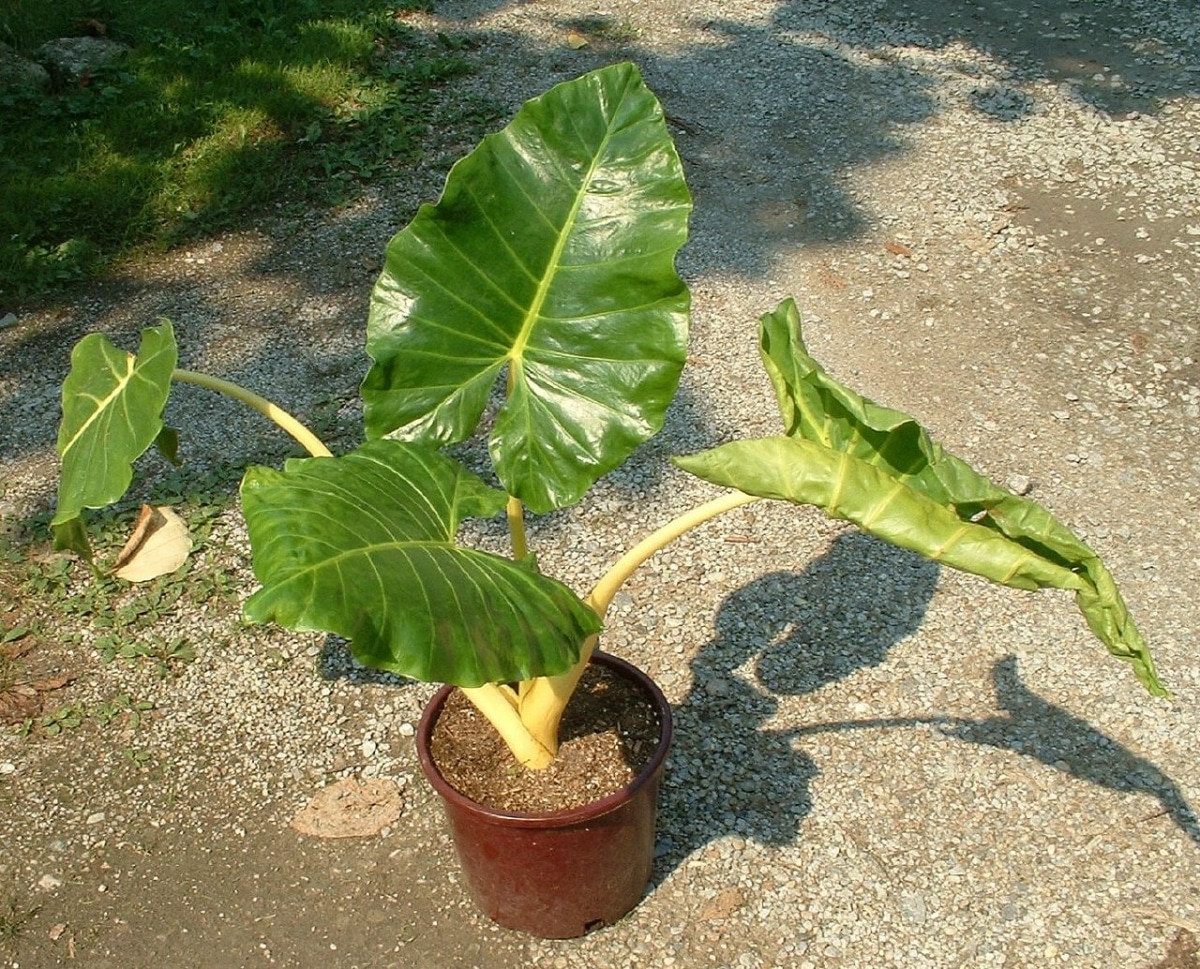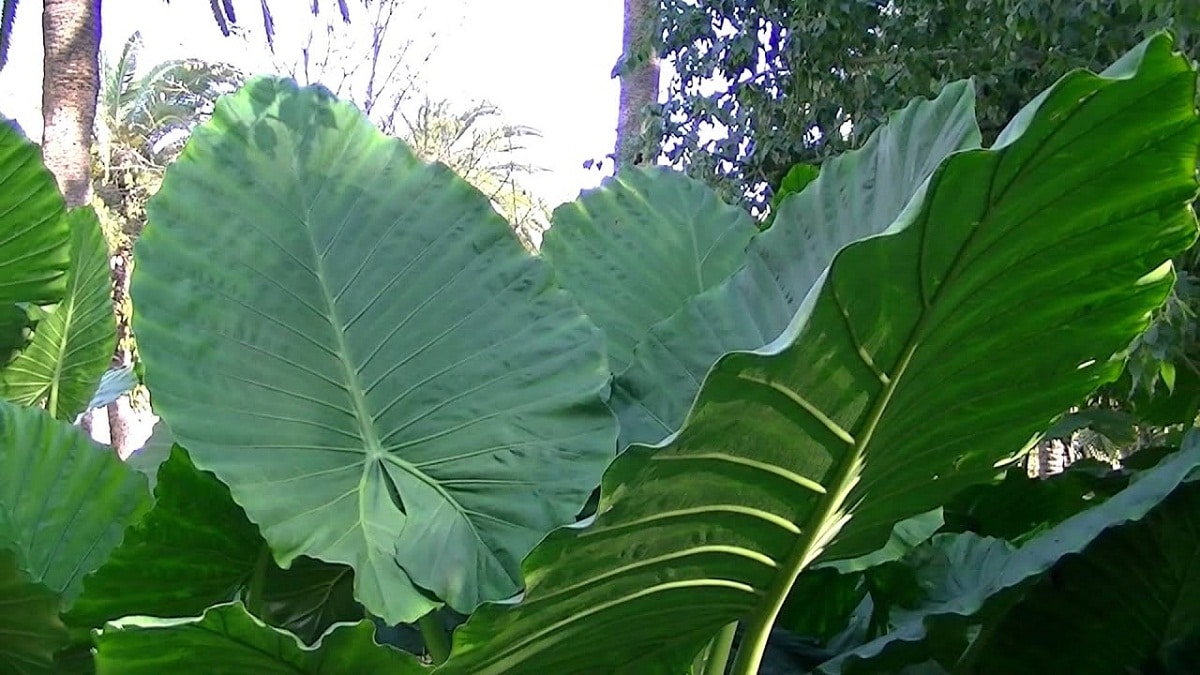
Alocasia is a fairly easy plant to care for; however, sometimes we can find ourselves with the situation that its leaves, previously healthy and of a beautiful green color, now look yellow. Why?
When a plant begins to have leaves that color, we have to be patient, since there are several reasons why it can have them that way, and the solution will not always be found quickly. So that, let's see why alocasia has yellow leaves and how to save it.
It has been watered too much

Image - Flickr / Henryr10
It is hard to believe that a plant that is usually kept in moist soils and even near ponds, has a hard time when overwatered, right? Well yes, it can happen, because alocasia is not an aquatic plant, so its roots are not prepared to live permanently submerged in water.

So yes, we have to keep the soil moist, but what we never have to do is water so much that we always see the soil waterlogged. In this sense, neither should we plant it in a pot without holes, nor put a plate under it unless we always remember, I repeat, always, to drain it.
But how can we know that the alocasia is drowning? Yes, it will have yellow leaves, but which ones? The inferior ones, that is, the oldest. But in addition to that, we can also find a very soft stem, as if it were rotten. In very severe cases, these stems can be easily removed.
How to save her? To have any chance, we have to "attack" on several fronts:
- On one hand, what is most urgent is to get the earth to dry, so if it is in a pot, we will take it out and wrap the earthen bread with absorbent paper and leave it in a dry and protected place overnight. The next day, we will plant it in a pot with clean holes and new soil. If it is planted in the garden, we can choose to remove it and leave it in a protected area so that the soil dries (this would be the most recommended), or aerate the soil with the help of a garden aerator such as this.
- Another thing to do is apply a polyvalent fungicide like this one from No products found.. We cannot know which fungi can affect it, but we can assume that if it is unlucky and a spore falls on the ground, it will do everything possible to damage it. So this product will be useful to avoid, or at least reduce the risk of that happening. We will apply it to the leaves and also to the ground once a week until we see that it improves (that is, until new leaves come out). Of course, the treatment will always be done at sunset, at a time when the Sun is already low, otherwise, it will burn.
- And finally, you have to space the risks. Alocasia needs frequent watering, yes, but not daily. Letting the soil take its time to dry out a bit is preferable to keeping it moist all the time. Therefore, you have to water about 3-4 per week during the summer, and about 2 per week the rest of the year.
urgently need water
Lack of water is quite a serious problem for alocasia. when you're thirsty, the leaves immediately begin to turn yellow, starting with the newest and then with the others. But first, we will see another symptom: the stems weaken and seem to "fall".
If this situation continues for a long time, its weakness will attract insects such as cochineals, which will feed on the sap, weakening it even more. And, also, the earth can be seen very dry, even cracked.
Fortunately, the solution is very simple: you just have to water. We have to pour water on the ground until we see that it is moist; that is, until it comes out of the pot's drainage holes if it's in one, or until the soil looks very moist. Also, we will have to water more often.
It is burning

Image – Flickr/Ninara
The alocasia is a plant that grows in places where there is a lot of light, but the direct sun or the sunlight that enters the house through the window can burn its leaves. This problem, although it can be noticeable, is quickly identified and also solved in a matter of a few minutes.
And is that we will suspect that it is burning if we see that spots appear only on some leaves, those that are more exposed to sunlight, or to its reflection if we have it next to a window. These spots will be yellow, but will soon turn brown, as if they were dry.
The solution, as I say, is simple: relocate it by taking it to an area protected from direct light. The leaves that are yellow will not recover, but we do not have to cut them until they are completely dry, since even if they only keep a small green area, it will serve to gather strength and produce new leaves.
We hope that your alocasia recovers and starts putting out healthy leaves soon.